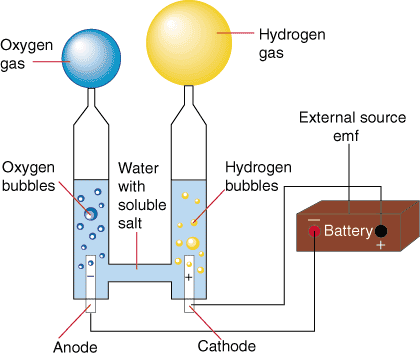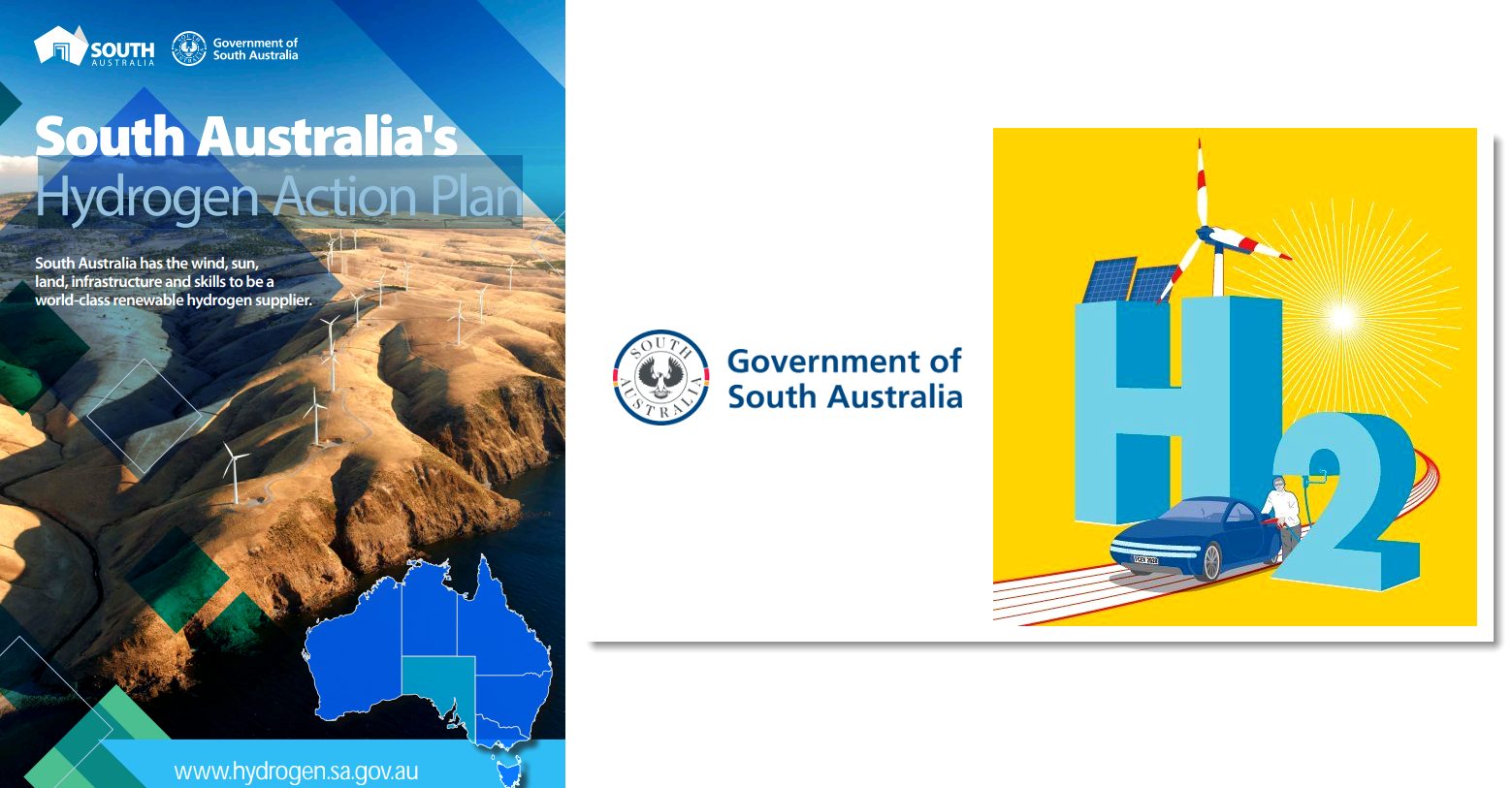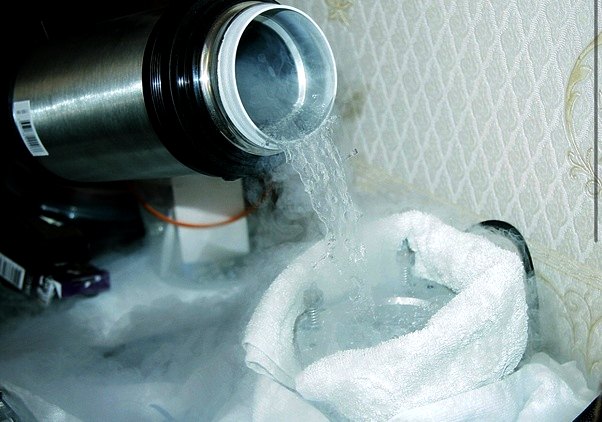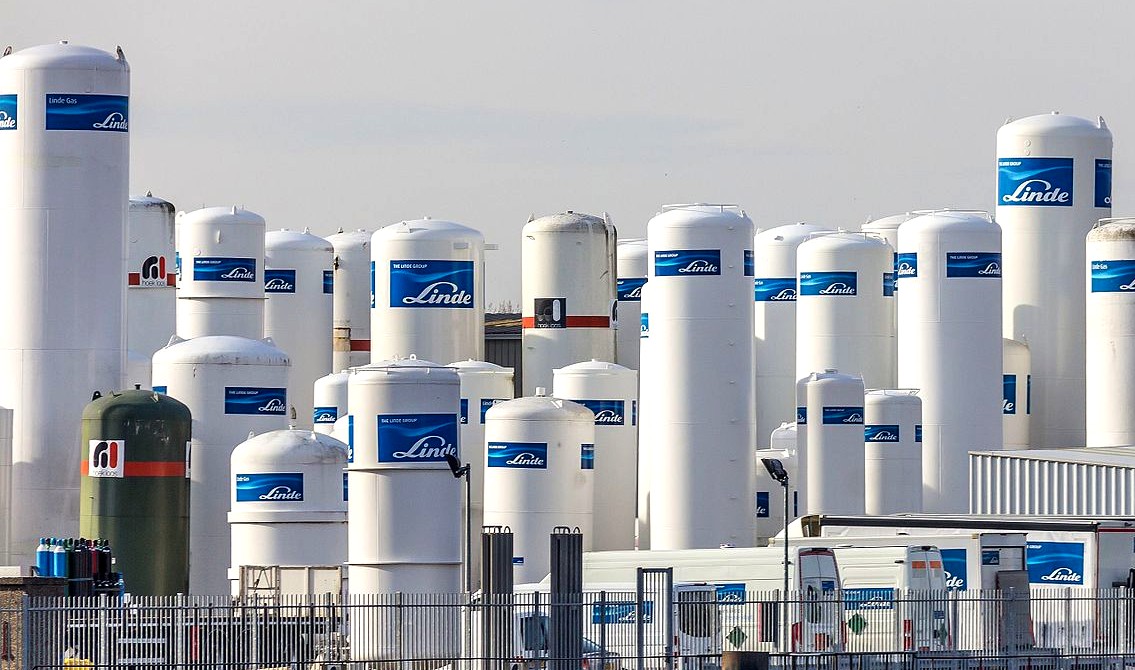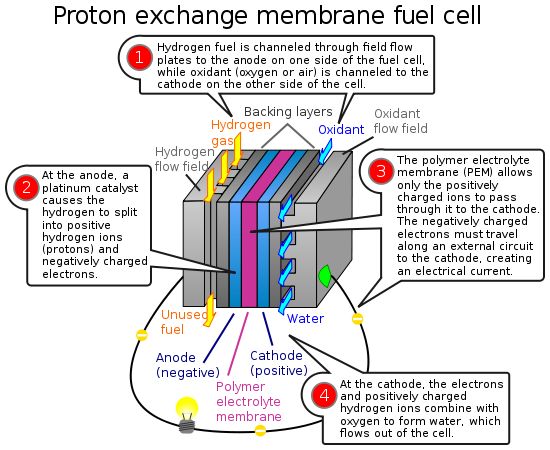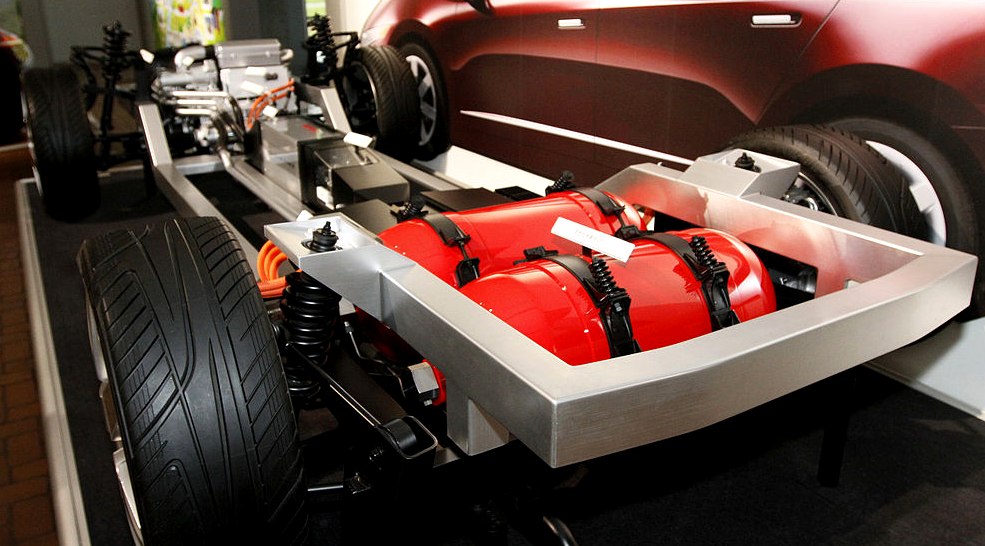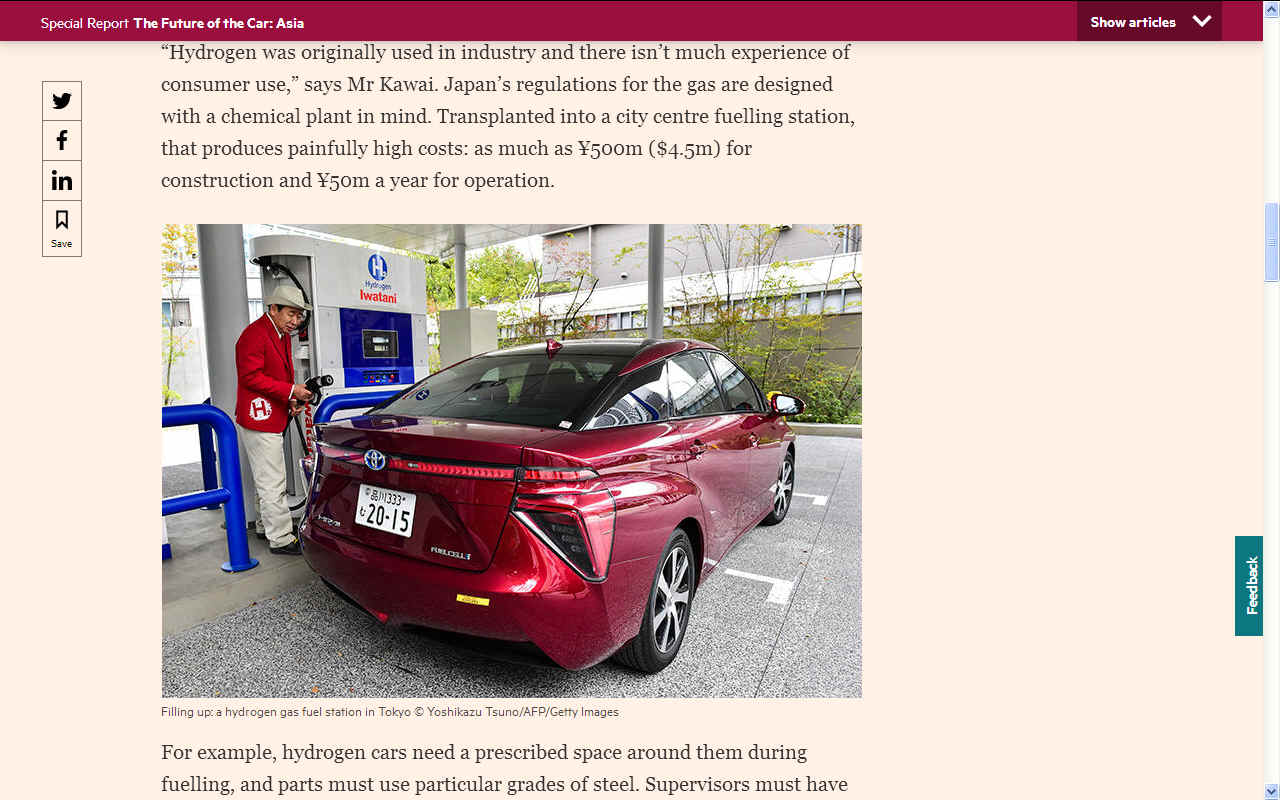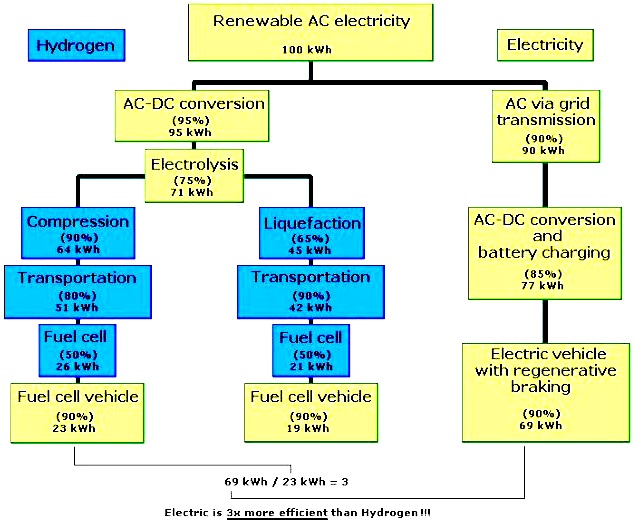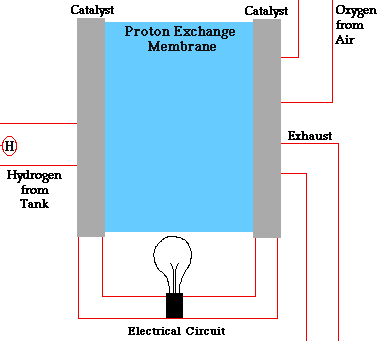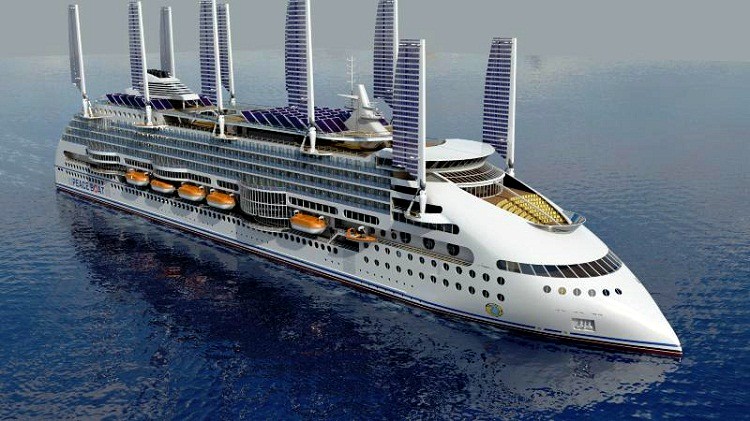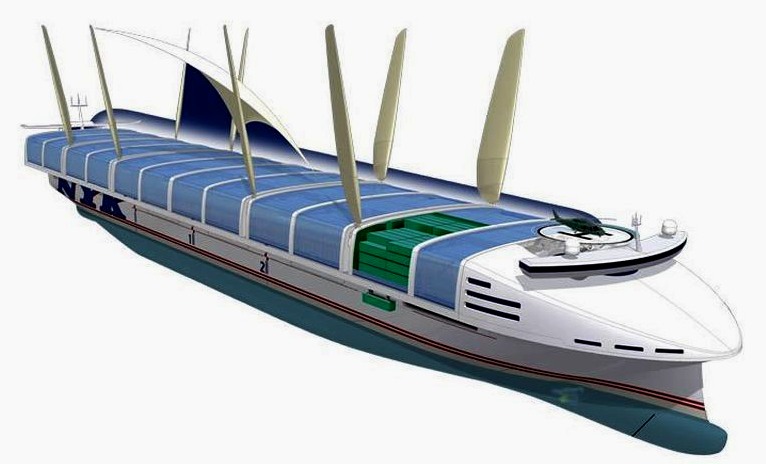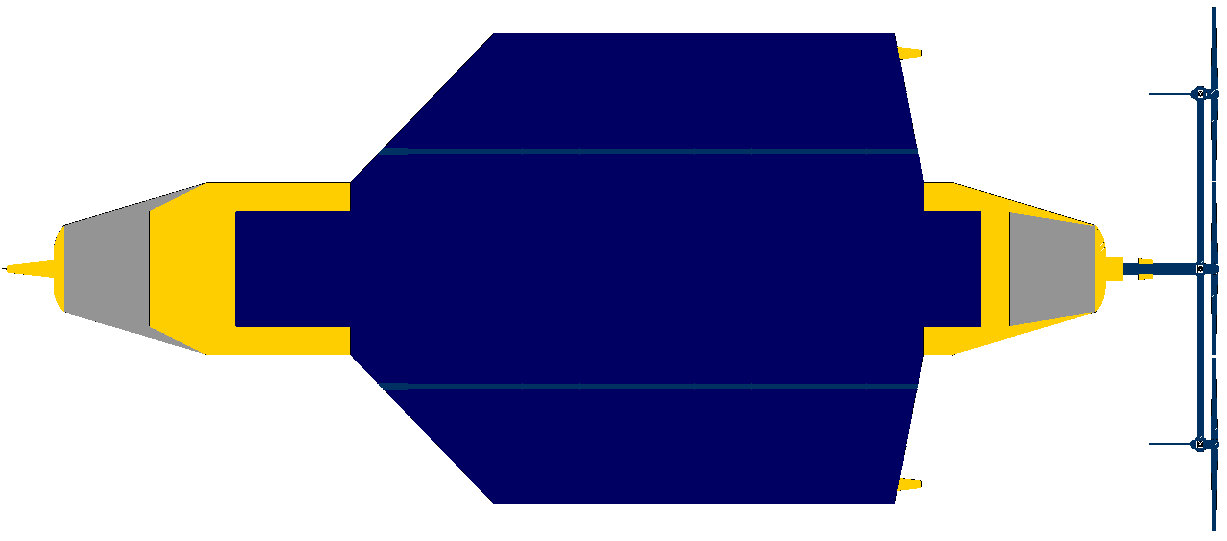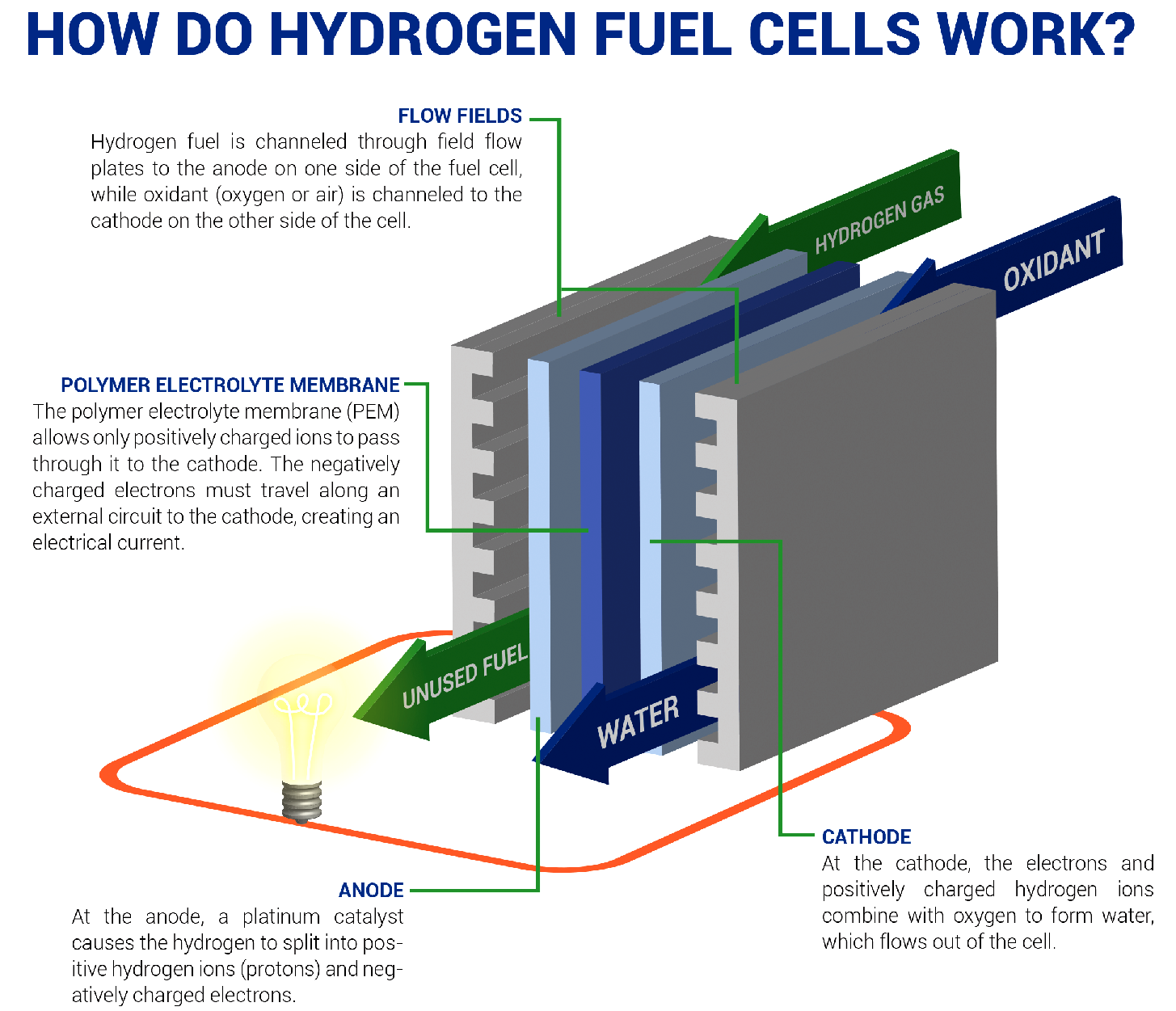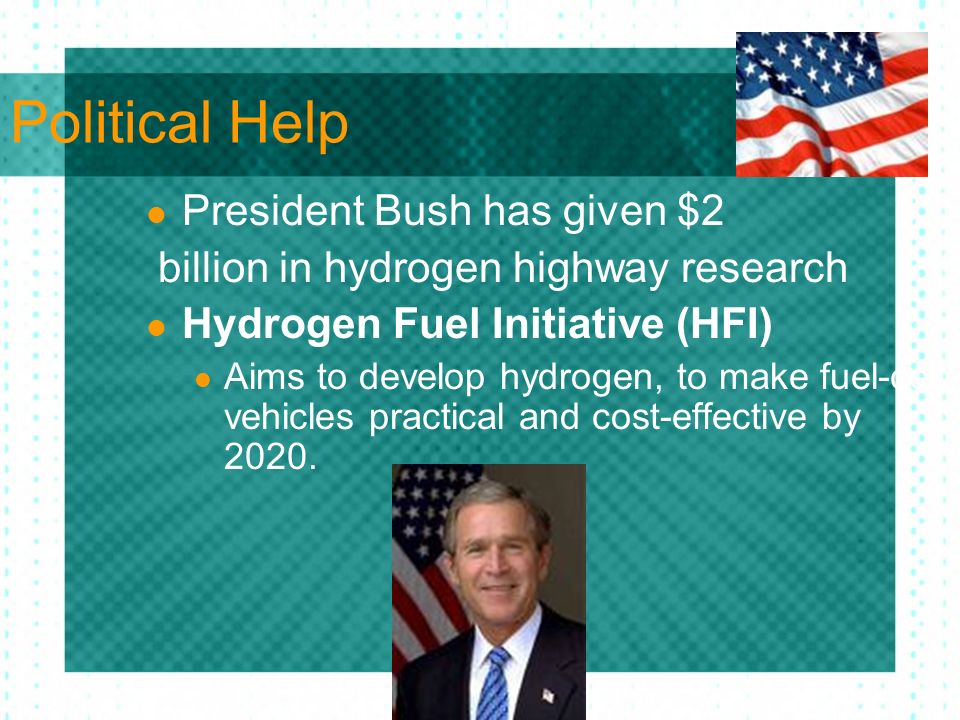|
LIQUID HYDROGEN - Lox
Please use our A-Z INDEX to navigate this site where page links may lead to other sites, or see HOME
|
||
DO TRY THIS IN THE SCHOOL LAB - Maybe not for home experimentation, but it is easy to split water to prove that hydrogen and oxygen gases are the constituents.
To exist as a liquid, H2 must be cooled below hydrogen's critical point of 33 K. However, for hydrogen to be in a fully liquid state without boiling at atmospheric pressure, it needs to be cooled to 20.28 K (−423.17 °F; −252.87 °C). One common method of obtaining liquid hydrogen involves a compressor resembling a jet engine in both appearance and principle. Liquid hydrogen is typically used as a concentrated form of hydrogen storage.
As with any gas, storing it as liquid takes less space than storing it as a gas at normal temperature and pressure. However, the liquid density is very low compared to other common fuels.
Once liquefied, it can be maintained as a liquid in pressurized and thermally insulated containers.
AUSTRALIA'S H2 PLANS - Looking to corner the market in hydrogen production, the Southern Australian government appears to be positioning itself as a supplier to Asian, most likely targeting Japan as the frontrunner in fuel cell powered cars. Deserts and windy coastal regions could produce mountains of hydrogen from solar and wind farms. But that electrical energy could be used far more effectively to power a zero carbon grid, hence make Australia cleaner quicker than looking to profits overseas. On the other hand, at least they are looking to the future, no matter how misguided. At least the technology will advance. We are not sure the fabled hydrogen economy is the answer to a truly Circular Economy.
Liquid hydrogen is a common liquid rocket fuel for rocketry applications — both
NASA and the United States Air Force operate a large number of liquid hydrogen tanks with an individual capacity up to 3.8 million liters (1 million U.S. gallons). In most rocket engines fueled by liquid hydrogen, it first cools the nozzle and other parts before being mixed with the oxidizer — usually liquid oxygen (LOX) — and burned to produce water with traces of ozone and hydrogen peroxide. Practical H2–O2 rocket engines run fuel-rich so that the exhaust contains some unburned hydrogen. This reduces combustion chamber and nozzle erosion. It also reduces the molecular weight of the exhaust, which can actually increase specific impulse, despite the incomplete combustion.
The product of its combustion with oxygen alone is water vapor (although if its combustion is with oxygen and nitrogen it can form toxic chemicals), which can be cooled with some of the liquid hydrogen. Since water is often considered harmless to the environment, an engine burning it can be considered "zero emissions". In aviation, however, water vapor emitted in the atmosphere contributes to global warming (to a lesser extent than CO2). Liquid hydrogen also has a much higher specific energy than gasoline, natural gas, or diesel.
UTOPIAN
The allure of the hydrogen economy is plain, splitting plain ordinary water using electrolysis to obtain oxygen and hydrogen gas is like a dream come true, especially if we can generate free electricity using solar cells and wind turbines to split the water. Then the hydrogen is free right.
But is the electricity free? No, not really.
There is a cost, including the cost of manufacturing the solar panels or wind turbines and the transmission line installation and maintenance.
Where there is a cost, then we have to consider payback time and working life. If we can use most of the solar and wind energy directly to power vehicles, we make the best of the working life of our energy harvesting apparatus. And that means reduced greenhouse gases, so a reduced carbon footprint for the human race in an anthropogenic fight against climate change.
BACK TO BASICS - ELECTROLYSIS
A water molecule is formed by two elements: two positive Hydrogen ions and one negative Oxygen ion.
The water molecule is held together by the electromagnetic attraction between these ions. When
electricity is introduced to water through two electrodes, a cathode (negative) and an anode (positive), these ions are attracted to the opposite charged electrode. Therefore the positively charged hydrogen ions will collect on the cathode and the negatively charged oxygen will collect on the anode.
HYDROGEN PRICES @ 2019
The biggest hurdle to hydrogen as an acceptable alternative fuel may be cost.
Most fuel cell electric cars carry about 5 kg to 6 kg of hydrogen but go twice the distance of a modern internal combustion engine car with equivalent gas in the tank, which works out to a
gasoline-per-gallon equivalent between $5 and $6.
That cost is currently being paid for by automakers, who provide lessees with prepaid cards for three years of fueling, up to $15,000. In
California, which has the nation’s highest gas prices, filling up a conventional car with a large gas tank can cost $40 or more.
Stephens is quoted as saying: “That is a good near-term acceptable number to hit in the next three to five years and get people off automaker-subsidized fuel.”
EUREKA - Hydrogen is the most abundant element in the universe. With the "green-energy" craze and talk of powering our future oil-free economy on hydrogen, it has received much attention in the last few decades. Learning about this potential fuel of the future is important and interesting, but not without snags, and these are for anyone to seek to overcome.
FOOL CELLS
Tesla co-founder and CEO
Elon Musk has dismissed hydrogen fuel cells as “mind-bogglingly stupid,” and that is not the only negative thing he has had to say about the technology. He has called them “fool cells,” a “load of rubbish,” and told Tesla shareholders at an annual meeting years ago that “success is simply not possible.”
INVENTION
OF THE FUEL CELL
ANIMATION
- A fuel cell converts the chemicals hydrogen and oxygen into water, and in the process it produces electricity.
ANYTHING BUT OIL
TRANSFERABLE TECHNOLOGY - The design of the Climate Change Challengers might be adapted to Cargo, Container, Cruise and Ferry designs, without needing to radically alter port facilities or use hydrogen gas. The designs above are not representative of adaptations of the solar and wind powered concept, but serve to illustrate the thinking of other design houses, some of which might be eligible for the new Blue Riband trophy.
A-Z
INDEX OF H2 POWERED FUEL CELL SHIPS
LINKS & REFERENCES
https://www.cnbc.com/2019/02/21/musk-calls-hydrogen-fuel-cells-stupid-but-tech-may-threaten-tesla.html https://www.cnbc.com/2019/02/26/how-toyota-is-helping-japan-create-a-hydrogen-fueled-society.html https://www.ft.com/content/98080634-a1d6-11e7-8d56-98a09be71849 https://www.explainthatstuff.com/fuelcells.html http://www.blue-growth.org
HOW HFC'S WORK
USA - In 2003, President Bush announced a program called the Hydrogen Fuel Initiative (HFI) during his State of the Union Address. This initiative, supported by legislation in the Energy Policy Act of 2005 (EPACT 2005) and the Advanced Energy Initiative of 2006, aims to develop hydrogen, fuel cell and infrastructure technologies to make fuel-cell vehicles practical and cost-effective by 2020. Obviously, the legislation did not work, or we'd seen hydrogen cars selling like hot cakes. Whereas, there are significant sales of battery electric cars.
The United States has dedicated more than two billion dollars to fuel cell research and development so far. Yet the basics principles of climate change is to find the best way to use less energy to achieve the same goal. Of course we have to explore all avenues before deciding on what works best. Thomas Edison found 1,000 ways not to make a light bulb before inventing his carbon filament version that succeeded. Joseph Swan in the UK filed a similar patent before the more famous US inventor. Keep at it chaps.
Please use our A-Z INDEX to navigate this site
AMMONIA - COMPRESSED GAS - ECONOMY - FUEL CELLS - FUSION - HYDRIDES - LIQUID GAS - METHANOL
|
||
|
This website is provided on a free basis as a public information service. copyright © Climate Change Trust 2022. Solar Studios, BN271RF, United Kingdom.
|
